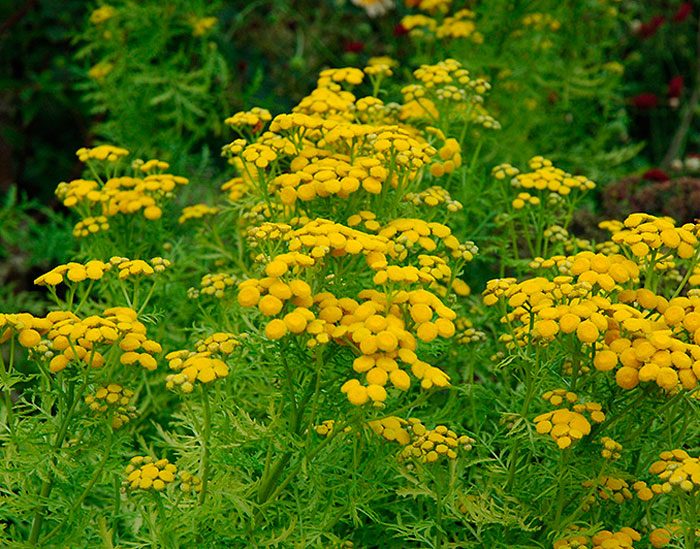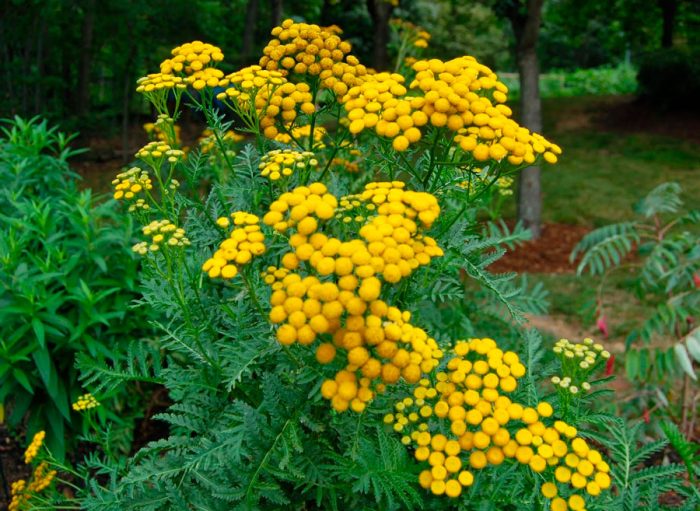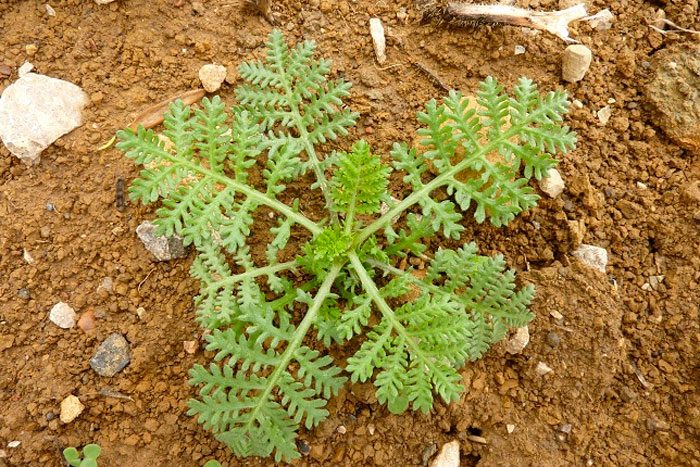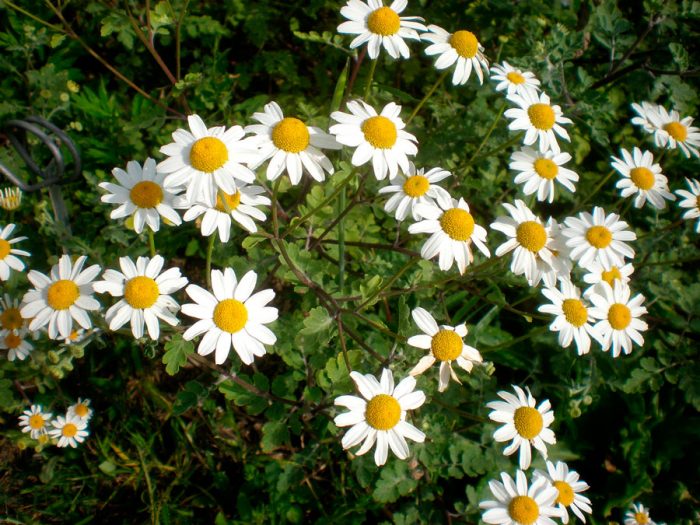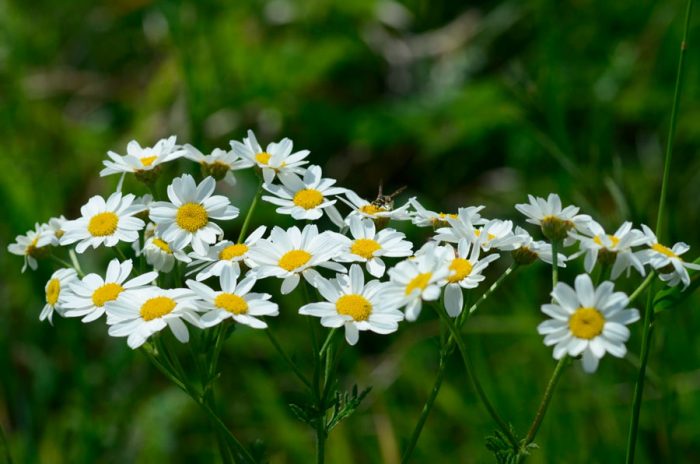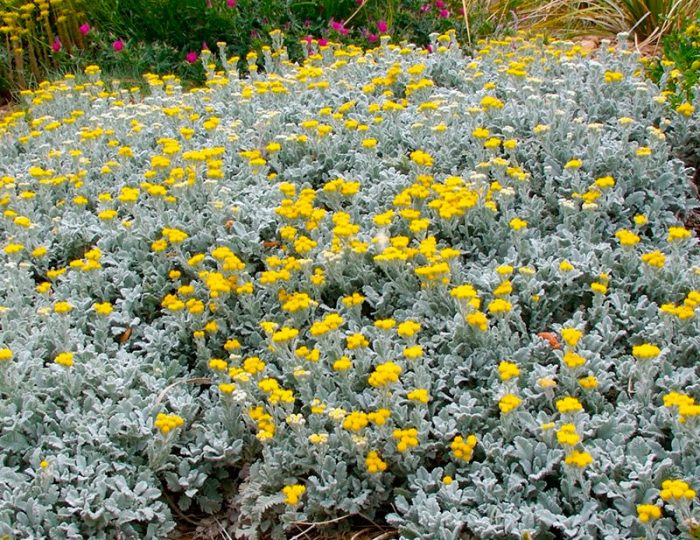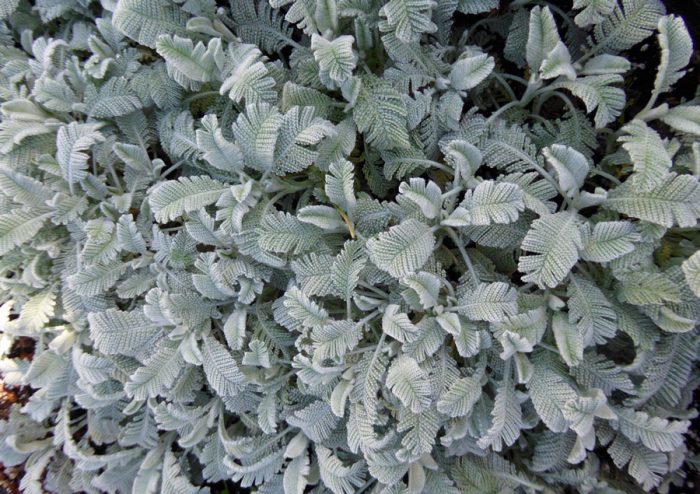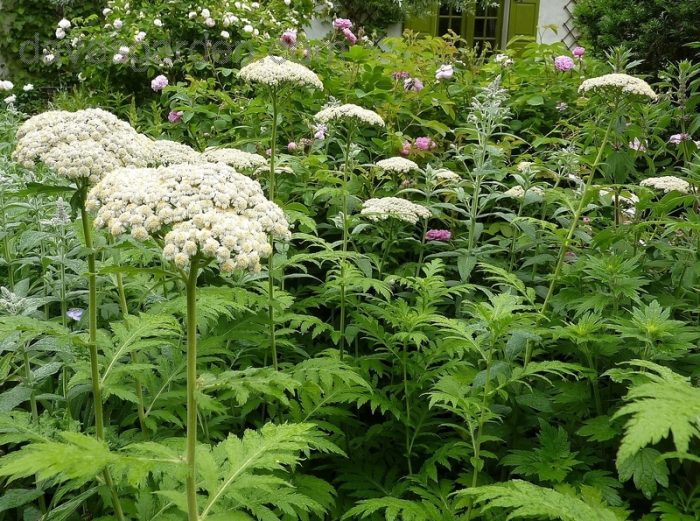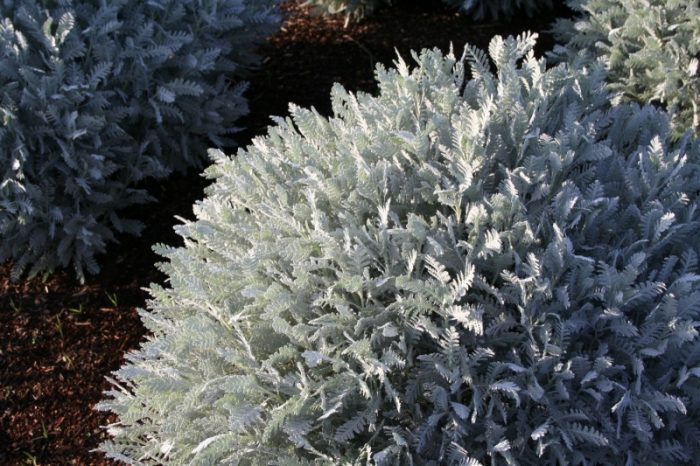A perennial herbaceous plant common tansy (Tanacetum vulgare) is a representative of the Asteraceae family (Asteraceae), as well as a typical species of the genus Tansy. In the people, such a plant is also called a love spell, wild mountain ash and nine-sided. This culture of the forest and forest-steppe zone can be found in natural conditions in the fields, on forest edges, in birch forests, on roads, in shrubs and on dry forests. And tansy grows in Mongolia, Kazakhstan, Japan, Europe, Kyrgyzstan, Korea and Turkey. In ancient times, peoples such as the Egyptians, Persians and Greeks used tansy to embalm corpses, while the roots of the plant were used to make a green dye. Tansy is eaten with pleasure by marals, marmots, sheep, deer and ground squirrels, but if animals consume a large amount of this herb, it can be poisoned. In some developed countries, this crop is grown as an essential oil plant, and it is used in the food and chemical-pharmaceutical industries.
Content
- 1 Features of tansy
- 2 Growing from seeds
- 3 Tansy care
- 4 Collecting tansy
- 5 Types and varieties of tansy with photos and names
- 5.1 Silver tansy (Tanacetum argenteum)
- 5.2 Balsamic tansy (Tanacetum balsamita), or kanuper, or kalufer
- 5.3 Shield tansy (Tanacetum corymbosum), or Caucasian chamomile
- 5.4 Dense tansy (Tanacetum densum)
- 5.5 Maiden tansy (Tanacetum parthenium), or maiden feverfew
- 5.6 Kharajan's tansy (Tanacetum haradjanii)
- 5.7 Large-leaved tansy (Tanacetum macrophyllum)
- 5.8 Sneezing tansy (Tanacetum ptarmiciflorum)
- 6 Properties of tansy: harm and benefit
Features of tansy
The height of the tansy bush varies from 0.5 to 1.5 m. The long woody rhizome is creeping and branching. There are many straight shoots, they are branched and faceted in the upper part, and their surface is slightly pubescent or bare. Twice pinnately dissected alternate leaf plates have an oblong-ovoid shape. They include from 5 to 12 pairs of oblong-lanceolate leaves, pointed, serrate, or entire along the edge. Their front surface is dark green, while the seamy side is covered with dots and glands. Lush flat apical corymbose inflorescences consist of baskets, which, in turn, include small yellow tubular bisexual flowers. Bloom is observed in July – September. The fruit is an elongated pentahedral achene.
Growing from seeds
Planting tansy
Common tansy is distinguished by its undemanding nature. So, when growing it, illumination, soil composition and the amount of moisture do not play a special role.Sowing seeds is carried out directly into open soil and is done in the last days of April or the first days of May. But a large number of gardeners are advised to sow tansy in the middle of the fall. For sowing seeds, a 20x40 scheme is used. The seed should be planted to a depth of 20 to 30 mm. Such a plant can also be propagated by vegetative methods. So, in May or August, you need to remove a bush from the ground that is 2 or 3 years old, it is divided into parts, which are planted in new places.
Tansy care
It is very easy to care for this herb. So, he needs to ensure timely watering, loosening the soil surface around the bushes and weeding.
At the beginning of the spring, and even after the tansy has faded, it will need top dressing. For this, superphosphate and ammonium nitrate are used (20 grams and 10-15 grams per 1 square meter, respectively).
A seed-grown plant begins to bloom only in the second year of growth. This crop is extremely resistant to diseases and pests. If any changes were noticed on the sheet plates, then they will need to be cut off and that's it.
Collecting tansy
As a medicinal raw material, as a rule, only tansy inflorescences are used, and they are collected in July-September, when the bushes begin to bloom. The cut raw materials must be spread out in a thin layer under the canopy for drying. If desired, cut flowers are tied in bunches and suspended from the ceiling in a well-ventilated drying room. Dried inflorescences should be freed from the remaining scraps of shoots, after which they are placed in a container made of glass, paper or wood for storage. They retain their beneficial properties for 2 years. Those baskets that are brown should be thrown out, because they are prohibited from being used as medicinal raw materials. In some cases, alternative medicine also uses foliage, as well as shoots of common tansy.
Types and varieties of tansy with photos and names
Gardeners cultivate not only common tansy, other types are also grown:
Silver tansy (Tanacetum argenteum)
This garden plant is decorative and deciduous. Its leaf plates are pinnate and erect. Some experts attribute this species to the genus Yarrow.
Balsamic tansy (Tanacetum balsamita), or kanuper, or kalufer
This plant is cultivated almost throughout Eurasia. It is edible and spicy-aromatic. Some experts attribute this species to the Chrysanthemum genus.
Shield tansy (Tanacetum corymbosum), or Caucasian chamomile
This species, distinguished by its unpretentiousness, is quite popular among gardeners. Outwardly, it looks like a disheveled chamomile.
Dense tansy (Tanacetum densum)
This undersized species is distinguished by its high decorative effect, as well as unpretentiousness. Feathery leaf plates have a silvery color. Loose baskets are yellow. This species has many varieties and varieties.
Maiden tansy (Tanacetum parthenium), or maiden feverfew
This decorative type is also quite popular among gardeners. This herb is a perennial. Fragrant corymbose inflorescences are white in color.
Kharajan's tansy (Tanacetum haradjanii)
The homeland of this plant, which is highly decorative, is Syria. Low dense lush bushes are decorated with silvery-gray leaves, as well as short-petaled yellow daisies.
Large-leaved tansy (Tanacetum macrophyllum)
This popular species is native to Southeast Europe and Turkey. Lush shields have a whitish color, and outwardly they are similar to yarrow flowers, but in tansy the foliage and the entire bush are larger.
Sneezing tansy (Tanacetum ptarmiciflorum)
This garden plant is very popular with gardeners. It comes from the Canary Islands, and earlier it was attributed to the genus Chrysanthemums.This shrub is a perennial. Its leaf plates and shoots are velvety, because there is a small pubescence on their surface. The flowers are whitish and have an irritating scent. There are a large number of varieties that differ from each other in the size and color of the leaf plates.
Properties of tansy: harm and benefit
Useful properties of tansy
The fact that tansy has medicinal properties has been known for a very long time. It is used in alternative medicine, cooking and cosmetology. It is also used in the pharmaceutical and chemical industries. During the opening of the flowers of common tansy, they contain alkaloids, polysaccharides, proteins, glycosides, organic acids, bitter and tannins, vitamins, gallic and tanacetic acids. The essential oil of this plant contains poison, but at the same time it has an antimicrobial effect.
This plant is used for inflammatory processes in the liver, kidneys and stomach, as well as for intoxication of the body. The inflorescences of tansy are part of such medicinal preparations as gastric, choleretic and renal.
In traditional medicine, tansy is used during the treatment of joint aches, diseases of the bladder, as well as for low acidity of gastric juice. Also, this plant helps to stimulate appetite and increase blood pressure. In alternative medicine, tansy is used for colitis, tuberculosis, hemorrhoids, epilepsy, diabetes, malaria, diarrhea, spasms, and worm infections. Medicines such as infusion, decoction or powder are prepared from it:
- Decoction... A couple of large spoons of dried tansy inflorescences must be combined with half a liter of freshly boiled water. The mixture is boiled for about 10 minutes, after which it is covered with a lid. Let the mixture sit for about 60 minutes. You need to take the broth in a third or a quarter of a glass three times a day before a meal.
- Infusion... 1 small spoonful of tansy inflorescences should be mixed with 1 glass of freshly boiled water. Wait for the mixture to cool completely. This remedy is suitable for rubdown, compresses, baths for gout and bruises.
- Decoction for enemas with worms... You need to combine 1 large spoonful of crushed tansy seeds with a couple of garlic cloves that need to be crushed. The mixture must be boiled for a third of an hour in a couple of glasses of milk. The product is used warm.
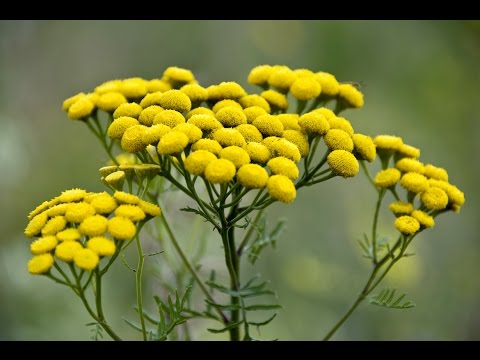

Watch this video on YouTube
Contraindications
Means from this plant should not be used by pregnant women, as well as children. If you exceed the dosage, it can cause the development of poisoning: convulsions, vomiting and indigestion will appear. If symptoms of poisoning appear, then gastric lavage should be performed as soon as possible and an adsorbent drug should be taken. If you have heart problems, irregular heart rhythms, or high blood pressure, you should consult with a qualified specialist before taking tansy remedies for the first time.

